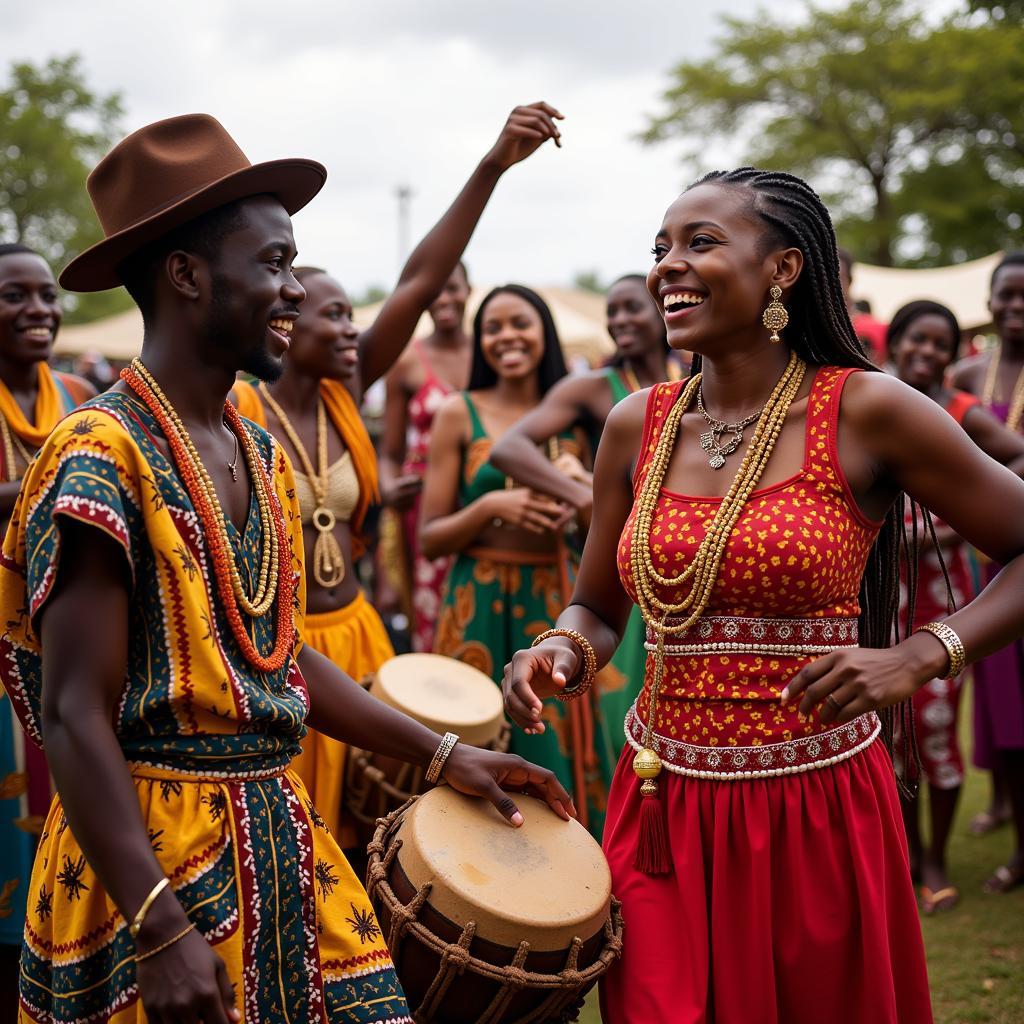Unveiling the African Bull Boar
The African Bull Boar, a term often used colloquially, typically refers to the male of various wild pig species found across the African continent. These formidable creatures play a crucial role in the ecosystem and hold significant cultural importance in many communities. This article delves into the fascinating world of these wild pigs, exploring their diverse characteristics, habits, and the complex relationship they share with humans.
Understanding the Term “African Bull Boar”
While “African bull boar” isn’t a strict scientific term, it paints a vivid picture of a powerful male wild pig. In Africa, various species fall under the umbrella of “wild pig,” including the common warthog, the desert warthog, the bushpig, and the giant forest hog. The males of these species are generally larger and more aggressive than females, exhibiting prominent tusks and often displaying dominant behavior. These characteristics contribute to the image evoked by the term “African bull boar.”
Different Species, Shared Traits
Although each species possesses unique characteristics, some shared traits contribute to their collective identification as “African bull boars.” These include their robust build, their omnivorous diet, their adaptability to various habitats, and their complex social structures. They play a vital role in seed dispersal and soil aeration, contributing significantly to the health of their ecosystems.
One of the most striking features of these animals are their tusks. These elongated canines serve multiple purposes, from digging for roots and tubers to defending against predators and competing for mates. The size and shape of the tusks often vary between species, further contributing to the diversity within the “African bull boar” category.
The African Bull Boar in Local Cultures
The “African bull boar” holds a varied place in the cultures of different African communities. In some, they are revered for their strength and resilience, symbolizing power and survival. In others, they are viewed as pests due to their tendency to raid crops. This complex relationship between humans and these animals is a testament to their integral role in the African landscape.
Hunting and Conservation
Hunting practices related to “African bull boars” vary across the continent, influenced by both traditional customs and modern conservation efforts. In some regions, hunting is regulated to ensure sustainable populations, while in others, it remains a significant part of local livelihoods. Understanding these diverse practices is crucial for effective conservation strategies.
What Makes the African Bull Boar Unique?
The “African bull boar” stands apart from other wild pig species globally due to its adaptation to the diverse African environment. From the arid deserts to the lush rainforests, these animals have evolved unique strategies for survival, further solidifying their iconic status within the continent’s fauna.
Adaptability and Resilience
Their adaptability to various climates and food sources is a testament to their resilience. This ability to thrive in diverse environments has allowed them to maintain healthy populations across a vast geographical range, despite facing numerous challenges, including habitat loss and human encroachment.
The Future of the African Bull Boar
The future of these magnificent creatures depends on a concerted effort towards conservation and sustainable management. By understanding their ecological importance and the cultural significance they hold for various communities, we can work towards ensuring their continued presence on the African continent for generations to come.
Conclusion
The African bull boar, in all its diverse forms, remains a captivating symbol of Africa’s wild beauty and resilience. Understanding these creatures, from their ecological roles to their cultural significance, is crucial for their conservation and for appreciating the intricate tapestry of life on the African continent. Protecting these animals is not just about preserving biodiversity, it is about safeguarding a vital part of Africa’s natural and cultural heritage.
FAQs
-
What is the exact scientific name for the African bull boar? The term “African bull boar” is a colloquialism. Specific species include the warthog, bushpig, and giant forest hog, each with their own scientific names.
-
Are African bull boars dangerous? They can be if provoked or feel threatened. Their tusks are formidable weapons.
-
What do African bull boars eat? They are omnivores, with their diet varying depending on the species and their environment. They consume everything from roots and berries to insects and carrion.
-
Where can I see African bull boars? They can be found in various national parks and game reserves across Africa.
-
What is the lifespan of an African bull boar? Their lifespan varies depending on the species and environmental factors but typically ranges from 10 to 20 years in the wild.
-
How are African bull boars important to the ecosystem? They contribute to seed dispersal, soil aeration, and serve as prey for larger predators.
-
What conservation efforts are in place to protect African bull boars? Conservation strategies vary across different countries and regions, including habitat preservation, regulated hunting, and anti-poaching initiatives.
Dr. Khadija Mwangi, a leading wildlife biologist specializing in African megafauna, states, “Understanding the intricate relationship between these animals and their environment is crucial for effective conservation strategies.” Further, Dr. Mwangi emphasizes, “Protecting these animals is not just about preserving biodiversity; it’s about safeguarding a vital piece of Africa’s natural heritage.” Finally, according to Dr. Mwangi, “These creatures are crucial for maintaining the delicate balance of their ecosystems.”
Need help? Contact us 24/7! Phone: +255768904061, Email: kaka.mag@gmail.com Or visit us at: Mbarali DC Mawindi, Kangaga, Tanzania.


